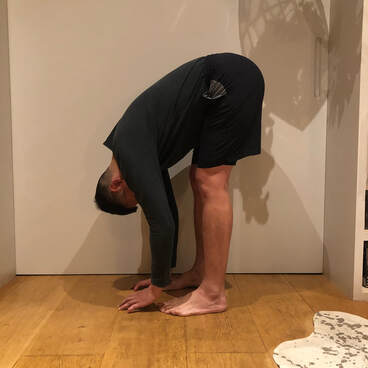|
It’s common to find practitioners struggle with activating the spinal muscles while moving through a Vinyasa class, in poses like Virabhdrasana III (Warrior 3) and/or Ardha Uttanasana (Halfway Lift), and I put this down to 2 main reasons. Firstly, the engagement of these muscles can be a rather unfamiliar sensation, and it’s often evident when students return with a blank stare when I point them towards this activation. It’s not a feeling that our body is used to and not what we regularly use in our day-to-day activities, unlike lifting an object, we’re familiar with the using of muscles in the arms. Secondly, the activation of these muscles happen through subtle movements, so it often goes unnoticed if we’re not paying attention to them, using the example of lifting with the arms, that’s a prominent and obvious action in contrast and easy to notice in our own bodies. But to activate the muscles in our back isn’t a difficult thing to do – many of us can find this feeling through Salambasana (Locust), it only becomes hard when those muscles are not the primary focus of the pose. Looking at Ardha Uttansana (Halfway Lift) today - this pose appears twice during Surya Namaskar A (Sun Salutation A) – at the start of the sequence and then again, at the finishing of the sequence. Offering strengthening and lengthening qualities from the heels to the crown of the head and also the hips, the pose is alive, full of activation throughout the entire back of the torso and lower body. The pose is alive, full of activation throughout the entire back of the torso and lower body. However, what’s often
* Red arrows represent energetic lines above Method –
1. From Uttanasana (Forward Fold), ground through the feet, especially heels, this is to close the kinetic chain in the body 2. Draw in the belly (to activate core muscles) 3. With heels grounded and core engaged – take a breath in as you slide arms up to knees, lifting the chest up halfway to lengthen the spine forwards (this should give a feeling of muscular contraction as the back of the body and legs activate) *lifting the chest is key as it brings the muscular activation in the back. The common instructional mistake is that students are asked to lengthen their spine forwards – that is the movement of the body and not the action that creates engagement. 4. On exhalation, letting all of the muscular engagement go and allow the body to drape forwards, creating a feeling of lengthening from the heels to pelvis, and from base of spine to crown of the head. **a part of this story appears in my IG post, to follow me, click on the icons below -
0 Comments
Leave a Reply. |
Hongyi the yogiFull-time yoga teacher & trainee yoga therapist in London. Eager to share, eager to learn! Archives
July 2021
Categories |




 RSS Feed
RSS Feed
